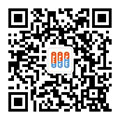Japanese JATE certification testing content
(1). When making a call, the communication terminal needs to send a signaling request for the call before the call is made
(2). When answering a phone call, the communication terminal needs to send a confirmation signal before answering
(3). Before hanging up the phone, the communication terminal needs to send a signal to disconnect the channel connection (including the business channel and control channel)

2. Calling functions (JATE authentication testing for other calling functions)
The communication terminal needs to meet the following requirements:
(1). When calling, when the communication terminal automatically confirms the response information of the other party, the communication terminal should be able to perform the following two actions:
a. After the call information (address signaling) is sent, the communication terminal needs to send a signal to disconnect the channel connection to the base station within one minute
b. If the response information of the other party cannot be confirmed, the communication terminal should stop the call.
(2). When the communication terminal has automatic dialing function, automatic redialing cannot exceed two times. If the time interval between the second dialing of the communication terminal and the first dialing of the communication terminal exceeds 3 minutes, it will be treated as two independent phones instead of automatic redialing, so it is not subject to the previous conditions.
(3). When the automatic dialing of communication terminals is used for fire and anti-theft alarms and other emergency calls, the above two provisions shall not apply.


4. Random access control (JATE authentication test, random access control test)
Communication terminals need to have a random access control function. When multiple communication terminals encounter call collisions, each communication terminal will call again after different delays to avoid further call collisions.
 5. Time alignment control (JATE certification test time alignment control)
5. Time alignment control (JATE certification test time alignment control)
The communication terminal needs to have time alignment control function, and the communication terminal can adjust the time according to the indicated value of the network.

6. Location registration control (JATE certification testing location registration control)
The communication terminal needs to have location registration control function, and the communication terminal needs to send location registration information (location registration/update request signaling) to the base station.
(1) If the location information from the base station does not match the location information saved by the communication terminal in memory, the communication terminal should send location registration information (location registration/update request signaling) to the base station, except when the communication terminal is sending other requests.
(2) When the communication terminal receives a position update confirmation signal from the base station, it should store the position update information in memory and retain it.

The communication terminal needs to meet the following requirements: After receiving the switching channel signaling sent by the network, the communication terminal needs to switch to the specified channel in the signaling.
This function can also be called channel reconfiguration function.


The communication terminal needs to have the following functions: When the communication terminal receives a request to disconnect the channel from the base station, it needs to send a signal to the base station to inform it that the request has been received and stop transmitting the signal according to the request.




Recommended items
-

Japan Radio Law and Japan Telec certification
When wireless products enter the Japanese market, they first encounter a mandatory certification called Japanese radio wave certification, commonly known as Telec certification. Radio wave certification mainly controls the RF part of the product....View more -

PSE, PSC, TELEC... What are those piles of certifications in Japan
PSE certification is a mandatory safety certification in Japan, used to prove that motor and electronic products have passed safety standards testing under the Japanese Electrical and Raw Material Safety Act (DENAN Law) or international IEC standards. The DENTORL Law of Japan stipulates that 498 products entering the Japanese market must pass safety certification. Am...View more -

How to apply for Japanese certification by phone? What other devices require Japan Telecom Law certification? How to handle Japan‘s telecommunications law? Introduction to JATE Certification in Japan...
Japan announced the implementation of the Telecommunications Law on April 5, 1985, to prove that relevant terminal equipment meets technical standards based on telecommunications services. From April 8 of the same year, it began to carry out technical standard compliance certification services....View more -

What is the difference between Japanese electronic product certification, Japanese radio wave certification, TELEC certification, and MIC certification?
Wireless products have strict regulatory standards in various countries, including SRRC certification in China, FCC-ID certification in the United States, and kcC certification in South Korea. In Japan, the certification for wireless products is Telec certification, also known as mic certification by some...View more




